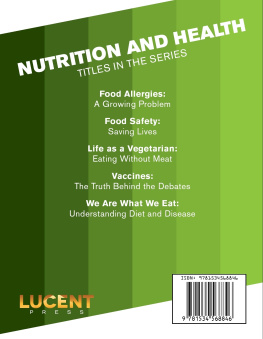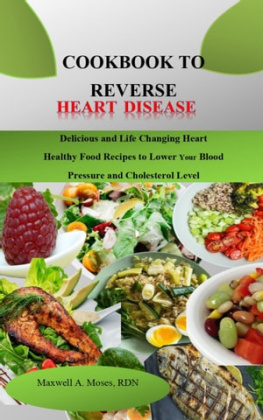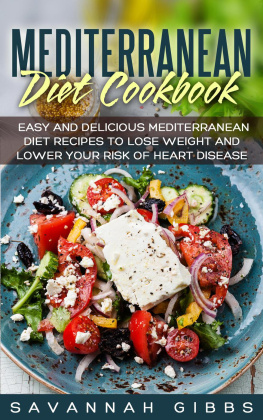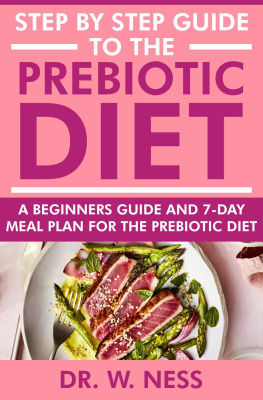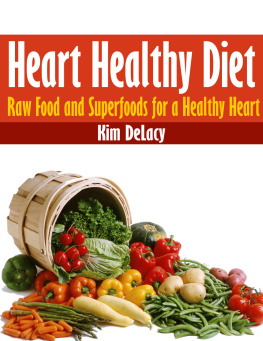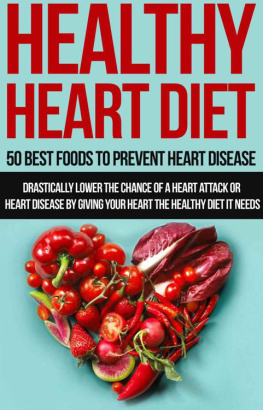
Published in 2020 by
Lucent Press, an Imprint of Greenhaven Publishing, LLC
353 3rd Avenue
Suite 255
New York, NY 10010
Copyright 2020 Greenhaven Press, a part of Gale, Cengage Learning
Gale and Greenhaven Press are registered trademarks used herein under license.
All new materials copyright 2020 Lucent Press, an Imprint of Greenhaven Publishing, LLC.
All rights reserved. No part of this book may be reproduced in any form without permission in writing from the publisher, except by a reviewer.
Designer: Deanna Paternostro
Editor: Jennifer Lombardo
Cataloging-in-Publication Data
Names: Brown, Holly.
Title: We are what we eat: understanding diet and disease / Holly Brown.
Description: New York: Lucent Press, 2020. | Series: Nutrition and health | Includes index. Identifiers: ISBN 9781534568846 (pbk.) | ISBN 9781534568754 (library bound) | ISBN 9781534568792 (ebook)
Subjects: LCSH: Nutrition-Juvenile literature. | Dietetics-Juvenile literature. | Health-Juvenile literature.
Classification: LCC TX355.B769 2020 | DDC 613.2dc23
Printed in the United States of America
Some of the images in this book illustrate individuals who are models. The depictions do not imply actual situations or events.
CPSIA compliance information: Batch #BW20KL: For further information contact Greenhaven Publishing LLC, New York, New York at 1-844-317-7404.
Please visit our website, www.greenhavenpublishing.com. For a free color catalog of all our high-quality books, call toll free 1-844-317-7404 or fax 1-844-317-7405.
CONTENTS
FOREWORD
P eople often want to do whatever they can to live healthy lives, but this is frequently easier said than done. For example, experts suggest minimizing stress as it takes a long-term toll on the body and mind. However, in an era where young adults must balance school attendance, extracurricular and social activities, and several hours of homework each night, stress is virtually unavoidable. Socioeconomic factors also come into play, which can prevent someone from making good health choices even when they are aware of what the consequences will be.
Other times, however, the problem is misinformation. The media frequently reports watered-down versions of scientific findings, distorting the message and causing confusion. Sometimes multiple conflicting results are reported, leaving people to wonder whether a simple action such as eating dark chocolate is helpful, harmful, or has no effect on their health at all. In such an environment, many people ignore all health news and decide for themselves what the best course of action is. This has led to dangerous trends such as the recent anti-vaccination movement.
The titles in the Nutrition and Health series aim to give young adults the information they need to take charge of their health. Factual, unbiased text presents all sides of current health issues with the understanding that everyone is different and knows their own body and health needs best. Readers also gain insight into important nutrition topics, such as whether a vegetarian diet is right for them, which foods may improve or exacerbate any existing health issues, and precautions they can take to prevent the spread of foodborne illnesses.
Annotated quotes from medical experts provide accurate and accessible explanations of challenging concepts, as well as different points of view on controversial issues. Additional books and websites are listed, giving readers a starting point from which to delve deeper into specific topics that are of interest to them. Full-color photographs, fact boxes, and enlightening charts are presented alongside the informative text to give young adults a clearer picture of todays most pressing health concerns.
With so much complicated and conflicting information about nutrition and health available on social media and in the news, it can be hard for all peoplebut especially for young adultsto make smart choices about their health. However, this series presents an accessible approach to health education that makes the work of staying healthy seem much less intimidating.
Introduction
EATING RIGHT?
An apple a day keeps the doctor away is a commonly heard phrase, and although there is no doubt that it is an oversimplification of the science behind the study of nutrition, it is true that eating healthy foods can change someones health for the better. While it is important for people to pay attention to how many calories they eat, not all calories provide the body with the same things. The foods people eat most often should contain nutrients: healthy fats and carbohydrates, proteins, vitamins, and minerals. Nutrients are the bodys power source; furthermore, eating nutrient-packed foods is the best way to prevent lifelong struggles with disease.
The difference between calories and nutrients can be observed when comparing Mountain Dew with hummus. One can, or 1.5 cups, of Mountain Dew is 170 calories, while half a cup of hummus is 218 calories. The Mountain Dew is filled with sugar and refined carbohydrates; the hummus is made up of fat, protein, and healthy carbohydratesnutrients that provide the body with energy and help it perform all of its vital functions. While the hummus has more calories than the Mountain Dew, it is the hummus that is going to keep someone feeling full and able to go about their day without a sugar crash. In other words, calories are necessary, but not all calories are created equal. Nutrient-rich calories provide the body with sustainable energy. Those that do not, such as the ones in Mountain Dew, are known as empty calories.
Aside from the day-to-day benefits of maintaining a healthy diet, there are far-reaching consequences to peoples food choices that affect not only how long they live (lifespan), but also how well they live (quality of life). Most Americans die of diseases that doctors classify as highly preventable, such as heart disease, certain types of cancer, and type 2 diabetes. Doctors say that preventing these diseases requires eating a healthy dietone that is rich in fruits and vegetables and contains only small amounts of lean meat, saturated fat, and processed sugars. Despite advances in medical research and countless studies demonstrating the value of nutritious food in promoting good health, the U.S. death rate from preventable diseases, especially heart disease, is increasing.

It is better for people to get their calories from healthy foods so they also get the nutrients they need.
The standard American diet (SAD) is full of processed sugar and fat and lacking in many nutrients. The Center for Nutrition Policy and Promotion uses the Healthy Eating Index (HEI) to assess diet quality in the United States in addition to how well the average Americans diet follows the Dietary Guidelines for Americans. While the American diet has improved since 2009, Americans received an overall healthy eating index score of 59 out of 100 in 2015. Breaking down the categories of the HEI shows that out of a possible 10 points, Americans scored 2.8 for whole grain intake but 6.2 for refined grain intake. Whole grains have far more nutrients than refined grains, so this shows that many Americans are choosing empty calories over nutrient-rich ones.

Most Americans eat too little healthy food and too much unhealthy food, as this information from the U.S. Office of Disease Prevention and Health Promotion shows.

